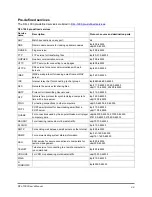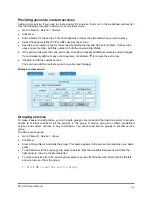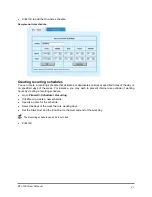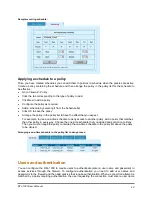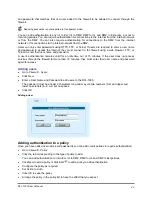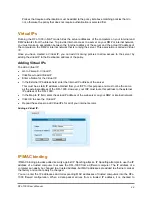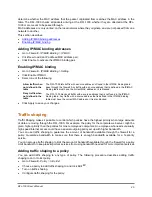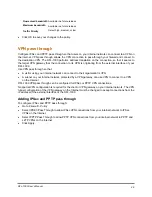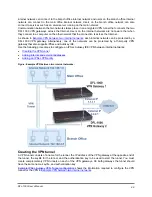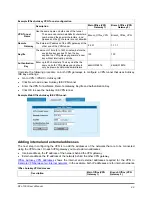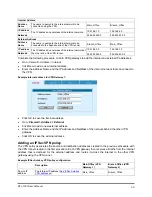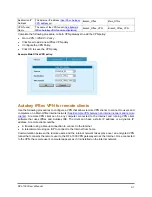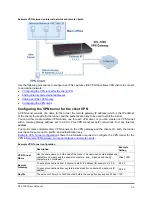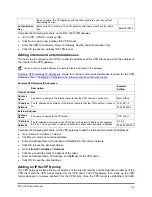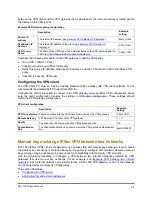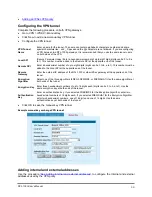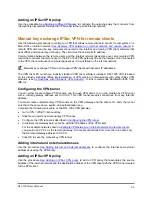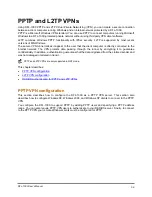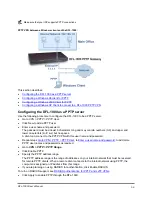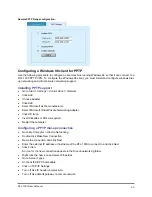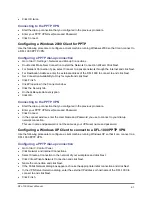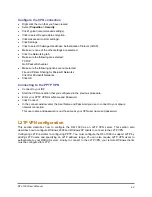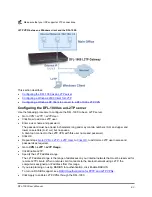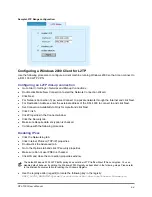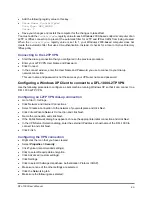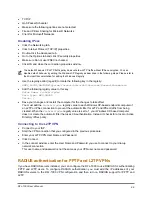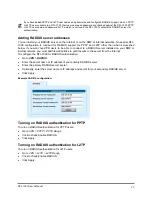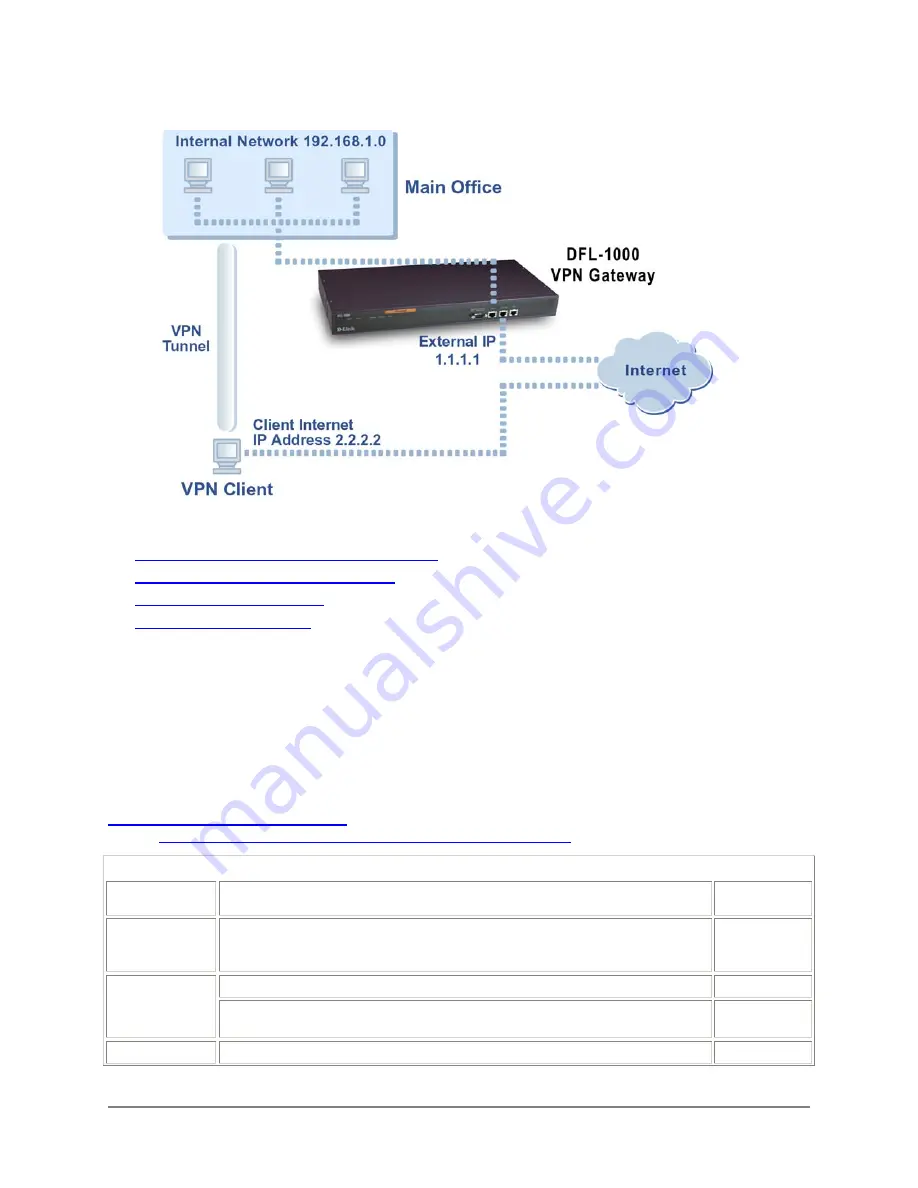
Example VPN between an internal network and remote clients:
Use the following procedures to configure an IPSec Autokey IKE VPN that allows VPN clients to connect
to an internal network:
•
Configuring the VPN tunnel for the client VPN
Adding internal and external addresses
•
Adding an IPSec VPN policy
•
Configuring the VPN client
•
Configuring the VPN tunnel for the client VPN
A VPN tunnel consists of a name for the tunnel, the remote gateway IP address (which is the IP address
of the client), the keylife for the tunnel, and the authentication key to be used to start the tunnel.
You can either create multiple VPN tunnels, one for each VPN client, or you can create one VPN tunnel
with a remote gateway address set to 0.0.0.0. This VPN tunnel accepts connections from any Internet
address.
You must create complementary VPN tunnels on the VPN gateway and the clients. On both, the tunnel
must have the same name, keylife, and authentication key.
Example VPN Tunnel configuration
shows the information required to configure the VPN tunnel for the
VPN in
Example VPN between an internal network and remote clients
.
Example VPN Tunnel configuration
Description
Example
Setting
VPN Tunnel
Name
Use the same name on both ends of the tunnel. The name can contain alphabetic
characters, numbers and the special characters - and _. Spaces and the @
character are not allowed.
Client_VPN
To accept connections from a client at a static IP address (for example, 2.2.2.2). 2.2.2.2
Remote
Gateway
To accept connections from any Internet address (for a client with a dynamic IP
address).
0.0.0.0
Keylife
The amount of time (5 to 1440 minutes) before the encryption key expires. When 100
DFL-1000 User’s Manual
52

